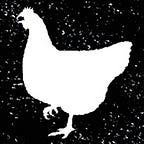A brief history of the “Worker Village” from the author of Only the Cat Knows
By Ruyan Meng
Only the Cat Knows, the award-winning novella by Ruyan Meng, explores life in a Chinese worker village in the 1970s. In the following essay, author Ruyan Meng details her research into the history of Chinese worker villages, and how it inspired the creation of Only the Cat Knows.
After the Communists took over China in 1949, one of the most serious obstacles the regime faced at the time was the housing shortage in the cities. The first few years in Communist China were a period of social and political upheaval. The central government quickly realized that its ambition to build a brand new socialist society required more than abstract propaganda to gain its citizens’ confidence.
The city dwellers, mostly consisting of the working-class, (most of the intellectuals had become state workers and were forced to become a part of the working class too) suffered from a lack of food, consumer goods, raw material, amenities, entertainment, and education. Despite working long laborious hours, they still could not make enough to support their families, and millions of them awaited shelters in the city. Makeshift mat tents and shacks were set up on the riverbanks, roadsides, and alleyways to accommodate the homeless residents.
At the time the Soviet Union was considered the “beacon of Communism” and the “big brother” of the Chinese. The regime would often send high officials on trips to Moscow to learn from the Soviets. The Communist party termed such a trip “qujing” (取经 “in search of enlightenment” — a phrase from the Ming Dynasty novel Journey to the West). As such, the architectural concept of “Worker Village” — a communal residential compound — was copied from the Soviet Union and introduced into Chinese society.
The municipal authorities used one standard blueprint to build tens of thousands of barrack-like, modular, housing units everywhere, where millions of city residents coming from all walks of life were forced to settle. Large families of more than five people would be stuck in a small rectangular gray room. Community members suffered from not only social and political oppression but were greatly affected by overcrowding. The layout of Worker Village served to create a tightly restricted community where residents constantly oversaw each other, and privacy was a foreign concept. All the while, the government could exert its superior force to subjugate its citizens into turning on one another out of fear.
By the middle of the 1980s, the living conditions within Worker Villages became so horrible that the city authorities were forced to step in to mitigate the situation. Gradually, Worker Villages were demolished and replaced with extensive but cheaply built multi-story concrete buildings. Such demolitions also served the Chinese government’s purpose to obliterate the past, to suppress history.
After losing their private residence in Beijing in 1949, my parents were forced to migrate to the city and settle in a Worker Village where the story of Only the Cat Knows took place. Thus, I spent most of my childhood in the Worker Village. It was many years later before I realized the magnitude of the impact my early life experience in the Worker Village had on me. All of my neighbors in the Worker Village had existed in my life much like Chekhov’s individual heroes. Our life stories intertwined from an early age, and they will forever live in my memory.
About ten years ago, I began my research and reached out to old neighbors, relatives, and former Worker Village residents. Over the years I had many conversations about life in Worker Village with my mother who helped me greatly with her recollections. The more I learned, the more encouraged I was to write the stories down. This eventually led to the creation of my first book Only the Cat Knows.
As William Faulker wrote: “Memory believes before knowing remembers.”
I am still believing, I am still remembering, and I am still writing…
Grab a copy of Only the Cat Knows and support an independent bookstore by doing so here.
